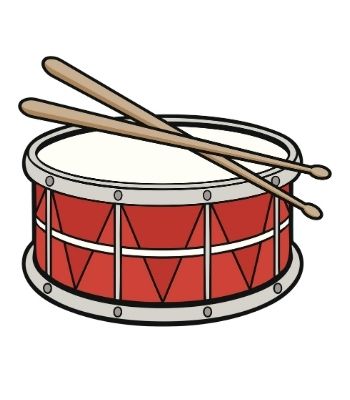Snare Drum

Family
Percussion
Description
With a name that means, “the hitting of one body against another,” instruments in the percussion family are played by being struck, shaken, or scraped. In the orchestra, the percussion section provides a variety of rhythms, textures and tone colors. Percussion instruments are classified as tuned or untuned. Tuned instruments play specific pitches or notes, just like the woodwind, brass and string instruments. Untuned instruments produce a sound with an indefinite pitch, like the sound of a hand knocking on a door. The percussion instruments are an international family, with ancestors from the Middle East, Asia, Africa, the Americas and Europe representing musical styles from many different cultures.
The snare drum joined the orchestra nearly 200 years ago. It has two calfskin or plastic drumheads stretched tightly over a hollow metal frame. The top head is struck with wooden drumsticks, and is called the batter-head. The bottom head, or snare-head has catgut or metal wires, called snares, stretched tightly across it. When this untuned drum is struck on the top head, the snares produce a characteristic sharp rattling sound as they vibrate against the bottom head.